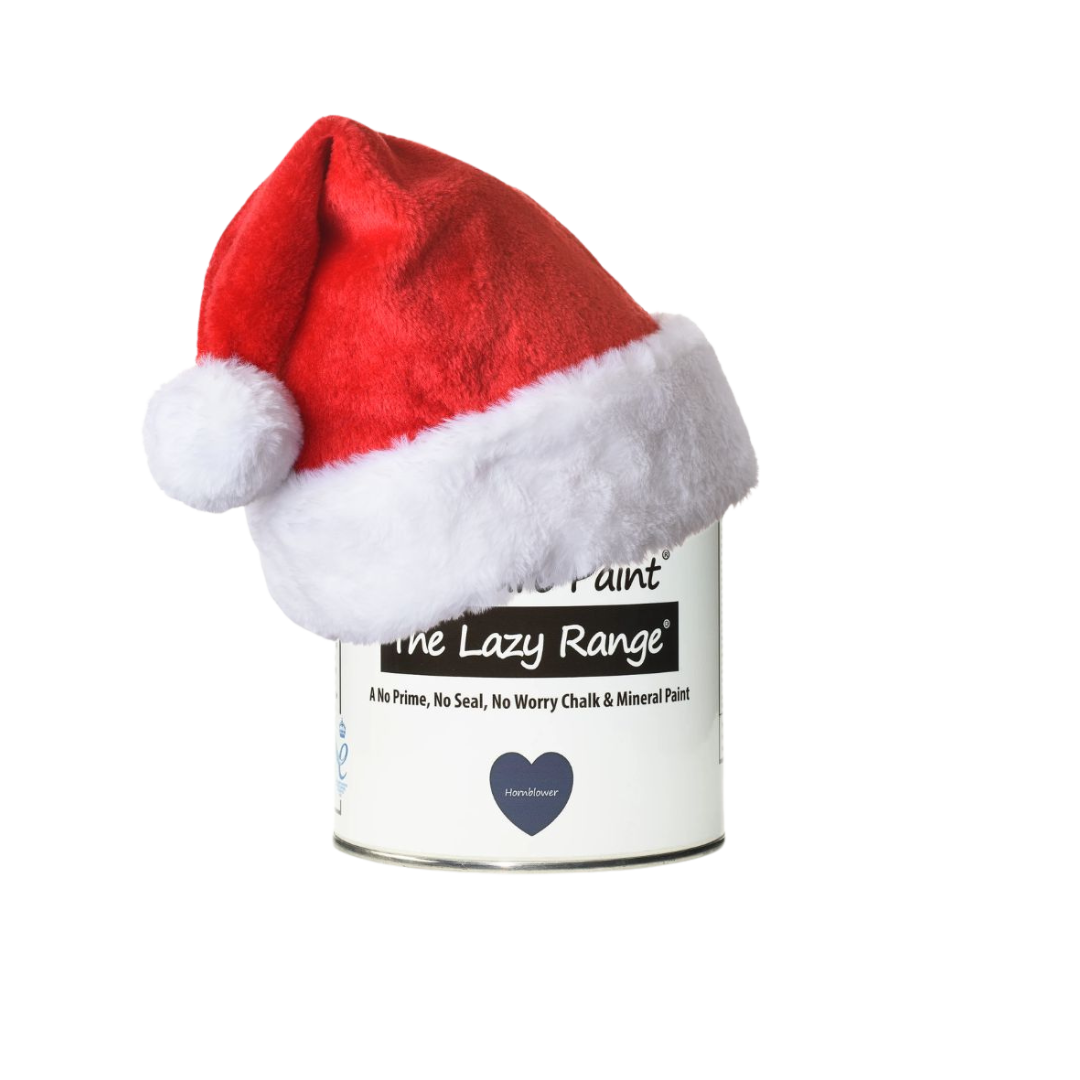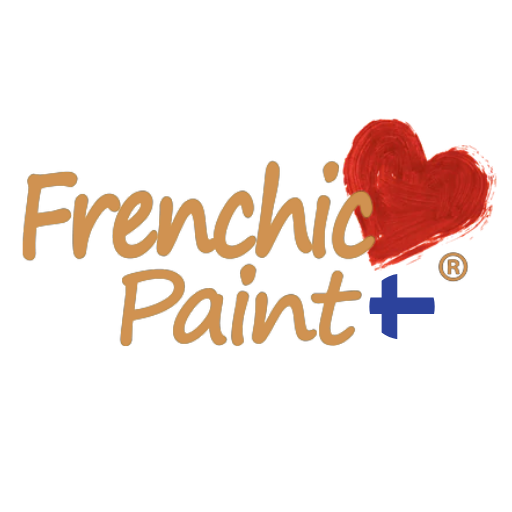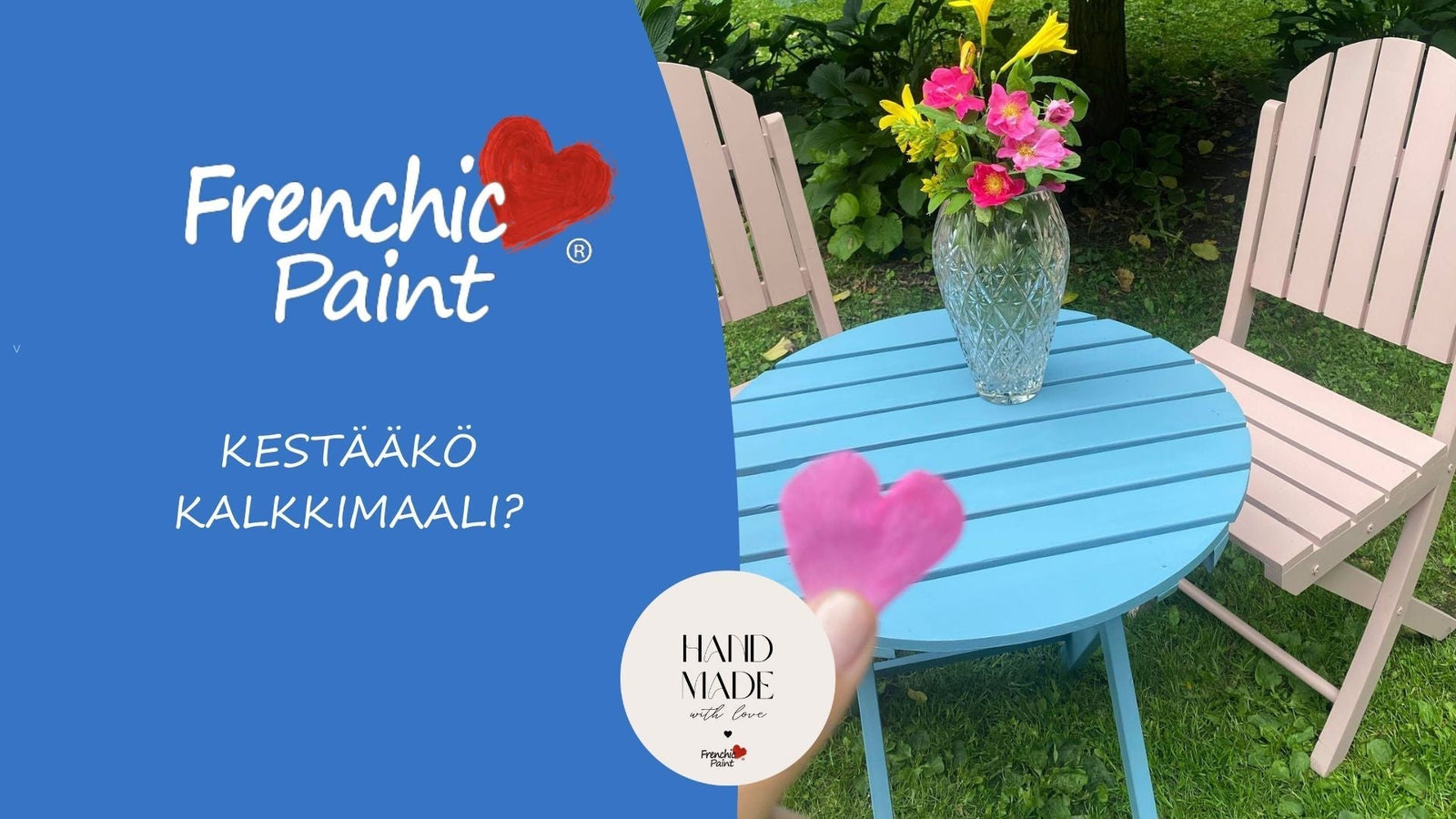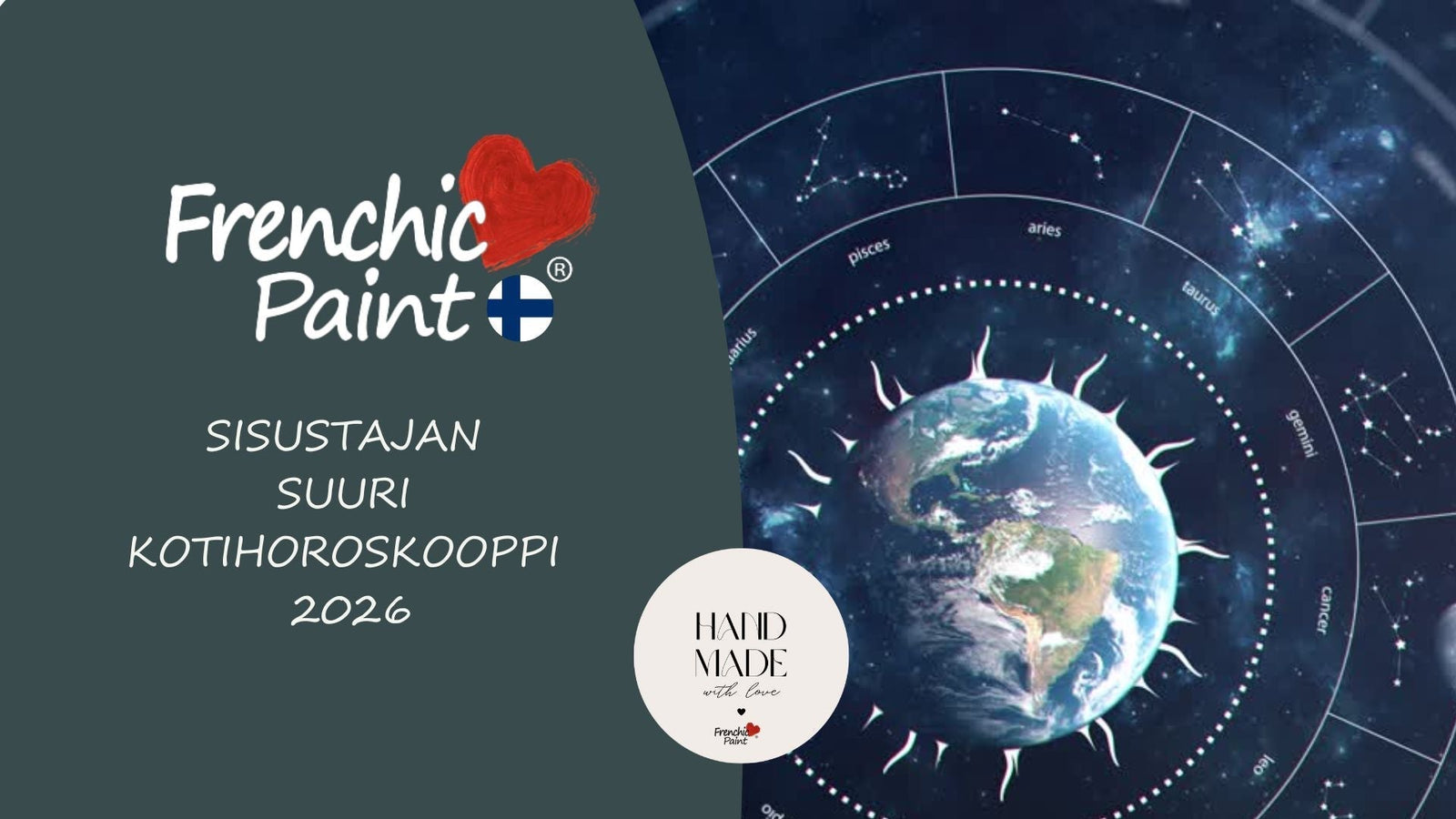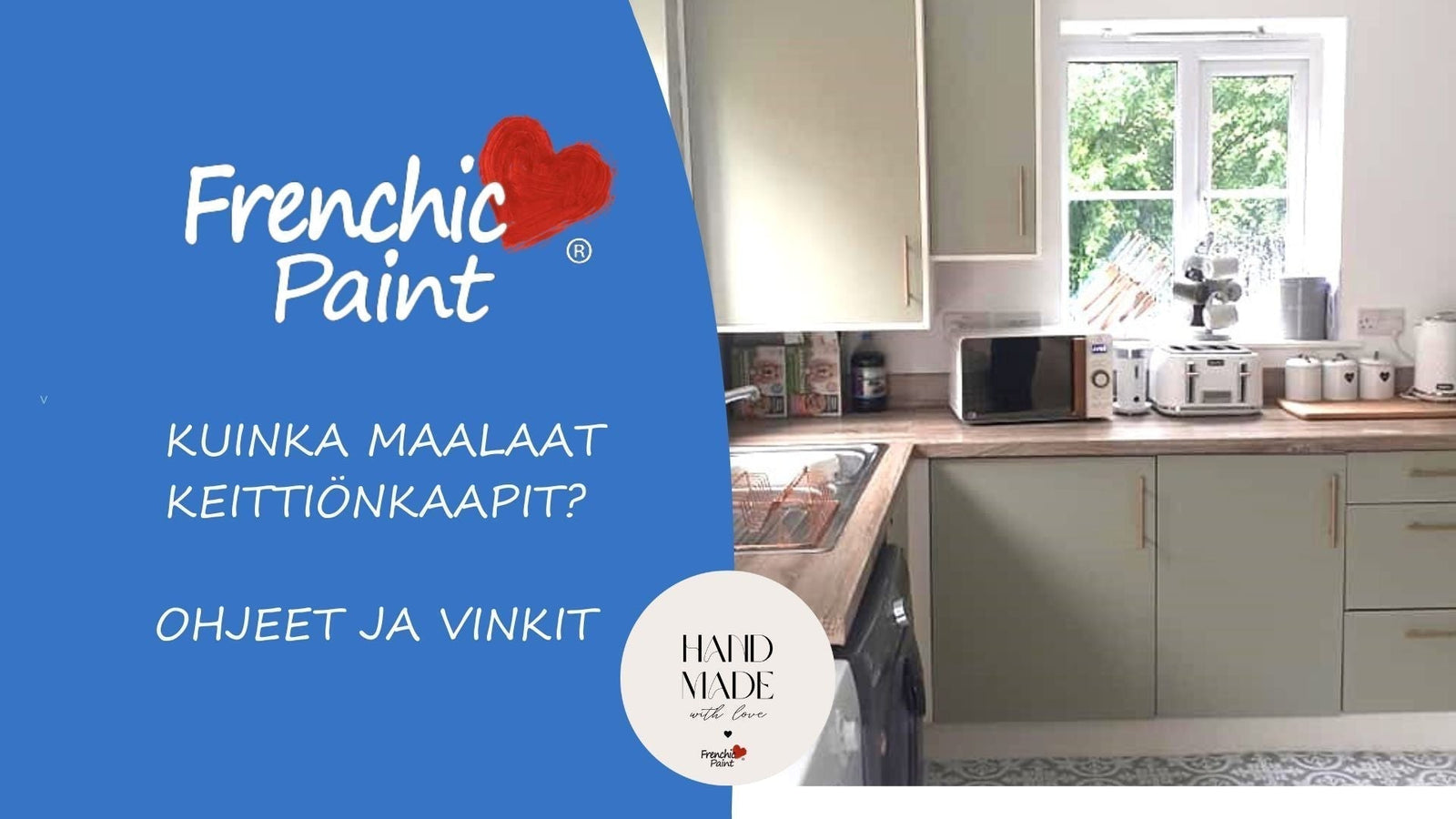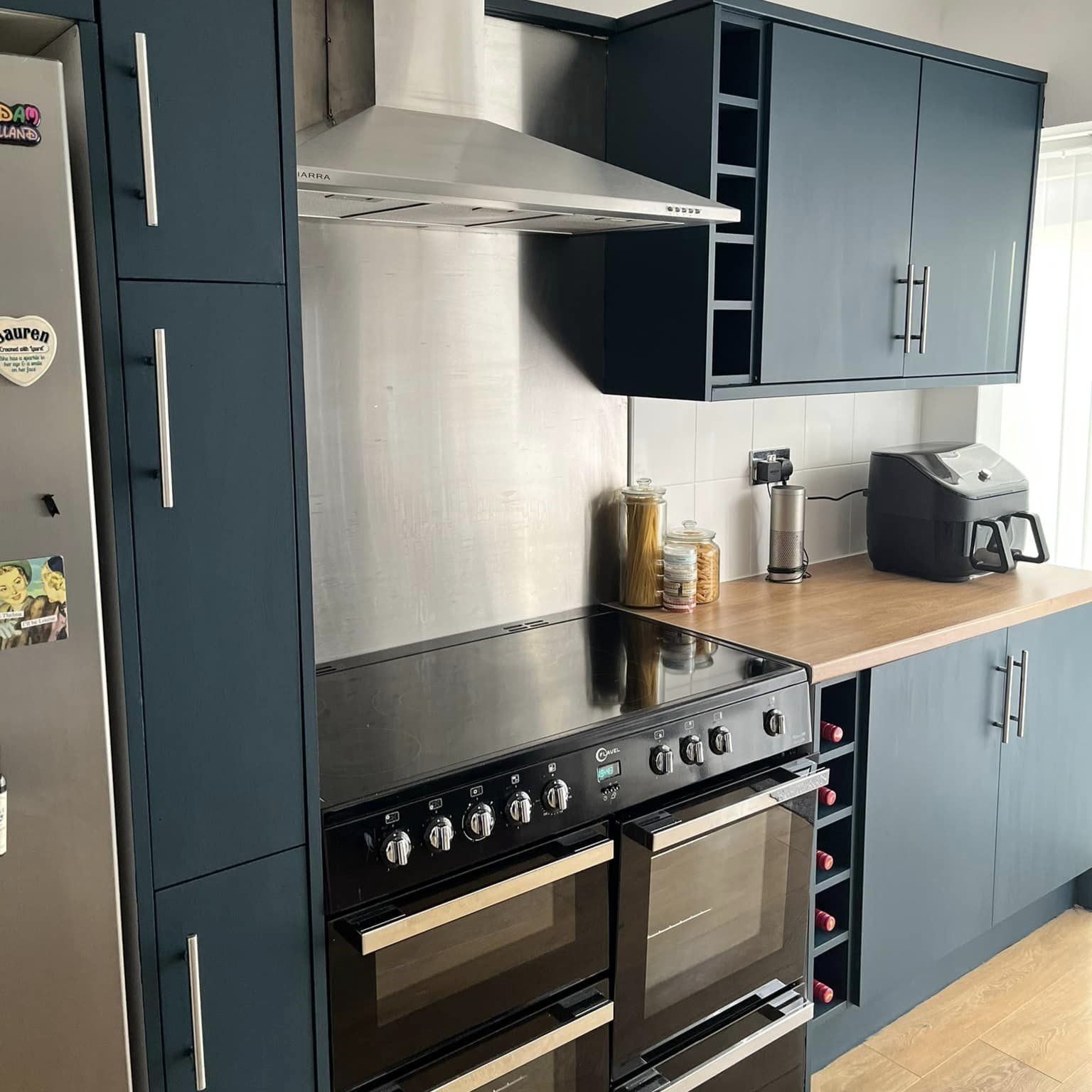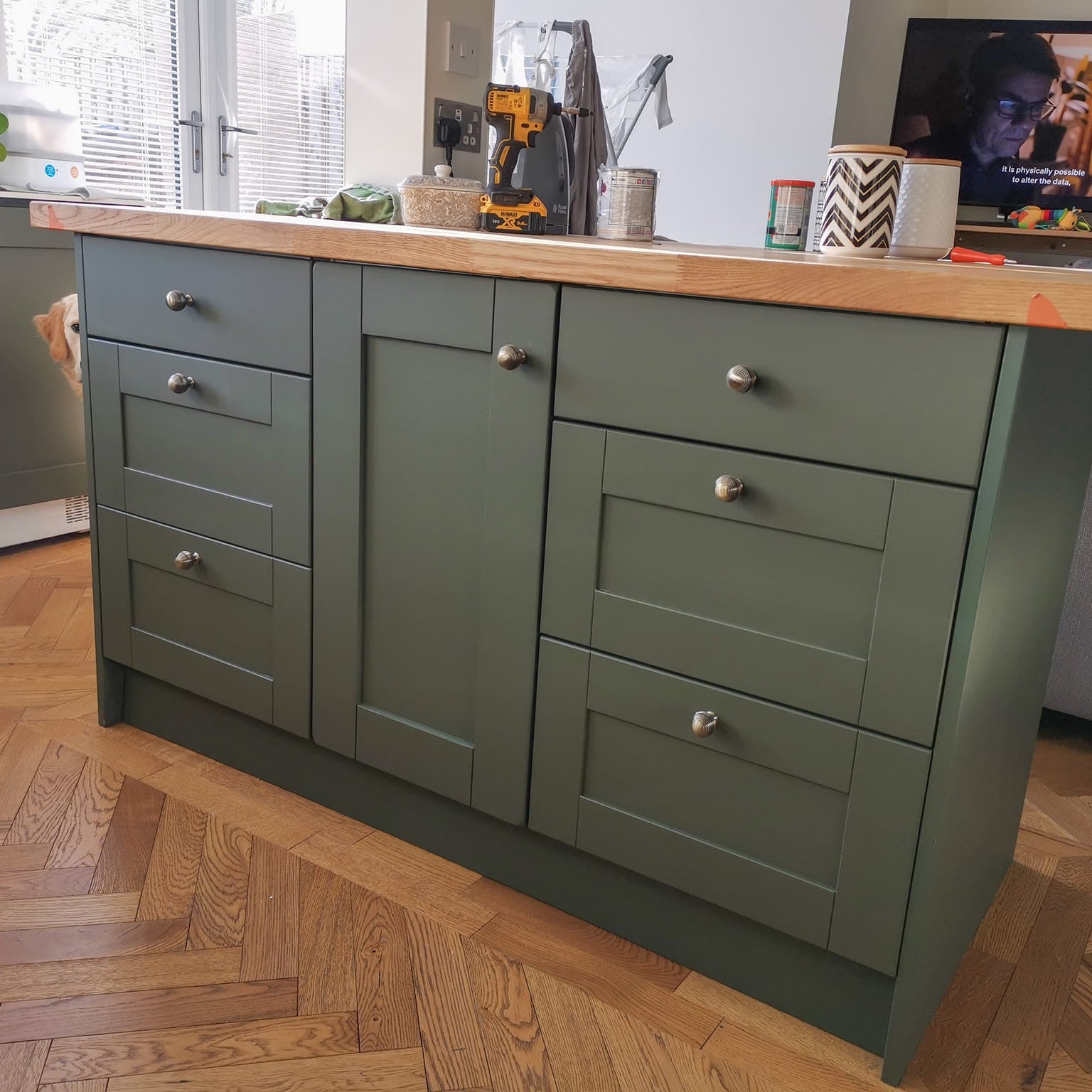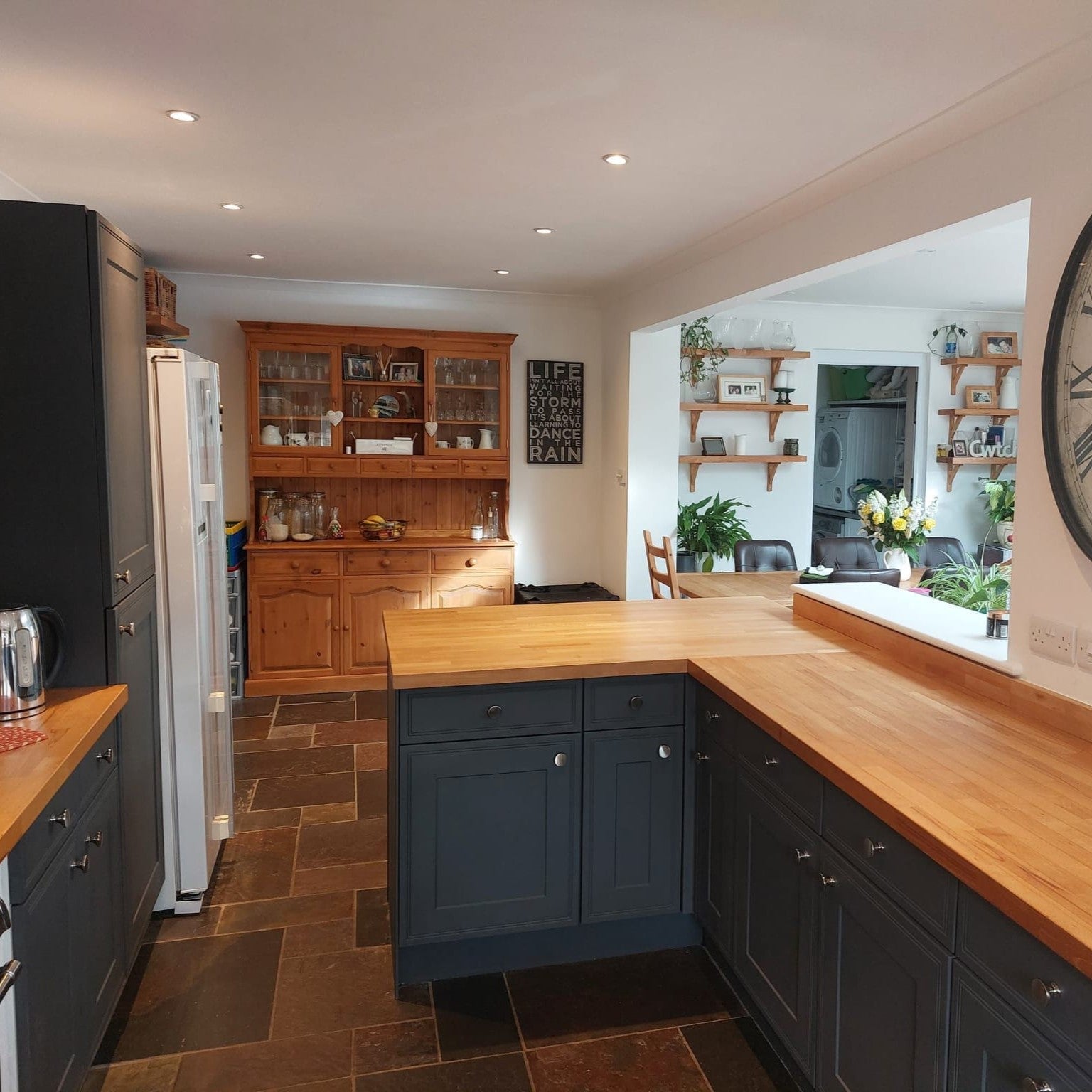Is lime paint durable? This is how Frenchic differs from the others!
Have you ever doubted the durability of whitewash? You heard right: not all whitewash is created equal. However, Frenchic Paint® is different – a high-quality, durable and easy-to-use alternative to painting furniture.
What makes Frenchic paint unique?
Frenchic Paint® is an award-winning innovation in lime paints, where all the necessary protective properties are already included in the paint.
Unlike traditional hobby paint-style chalk paints intended for crafts, Frenchic is designed specifically for durable furniture painting, demanding renovation projects and professional use.

How do you ensure the durability of lime paint?
- Prepare the surface carefully : clean, roughen and dry.
- Paint at least twice. Frenchic paints do not need to be thinned, but always mix the paint thoroughly before use. For best results, apply at least two coats.
- Observe drying times and painting conditions : let the paint surface dry for at least 48 hours.
- Allow the paint to harden in peace : final hardness is reached in approximately three weeks.
- Use mild detergents and avoid abrasive cleaning tools .
Is it necessary to do foundation work?
Yes. Careful preparation ensures the durability of the paint surface:
- Read the instructions before you start. Instructions can be found in our Knowledge Bank and on the side of the paint can.
- Wash and clean surfaces.
- Lightly roughen smooth and shiny surfaces.
- If necessary, use Frenchic Finishing Coat to prevent breakouts.
Care and maintenance of painted surfaces
Life leaves its mark on all surfaces – even painted ones. Fortunately, paint maintenance and touch-up painting are easy tasks. Always treat your painted surface with care and appreciate your paint job:
-
Use placemats and coasters on tabletops.
-
Touch up minor scratches and dents if necessary.
-
If necessary, protect the painted surface with Frenchic Tuff Top Coat or Finishing Coat.
Tips for specific applications
-
Kitchen countertop or children's high chair : always use a finishing coating (e.g. Tuff Top Coat) that effectively protects the paint surface.
-
Painted furniture for outdoor use : store it under cover during the winter and prepare for maintenance painting in the spring if necessary.
-
Painted rag rug stripes on the terrace or outdoor stairs : a fun idea, but be prepared for annual maintenance painting.
How many coats of paint are needed?
When using Frenchic paints, apply at least two coats of paint to achieve a durable and even surface.
Why does Frenchic paint need time to harden?
Frenchic paint dries quickly, but the curing process takes about three weeks, during which the protective properties of the paint surface become stronger. This is the normal curing time for water-based paint.
Properly care for painted surfaces
- Avoid harsh chemicals and abrasive cleaning agents.
- Absolutely avoid using disinfectants, detergents containing bleach, and steam cleaning on painted surfaces.
- Use only mild detergents.
- Maintain and touch up if necessary.
- Read more about paint surface care here.
Discover more Frenchic products and tips on our website frenchicpaint.fi .
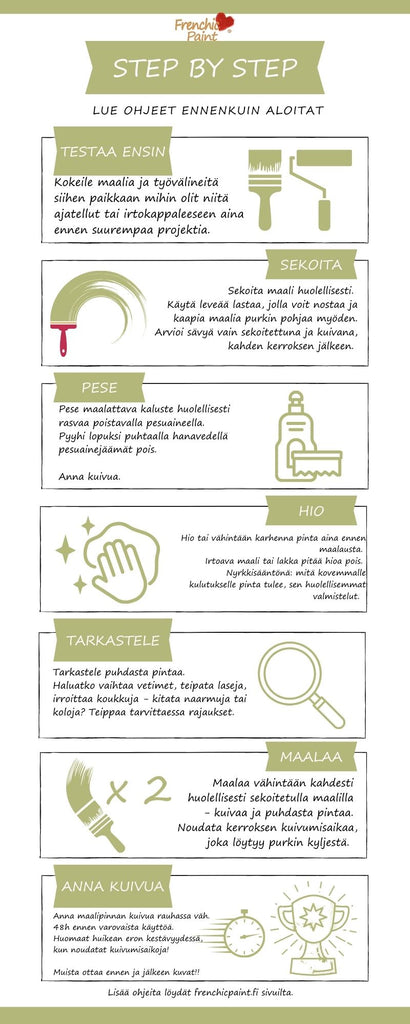
You can find more painting instructions in Frenchic's own FB group 'Frenchic Paint Finland'.
